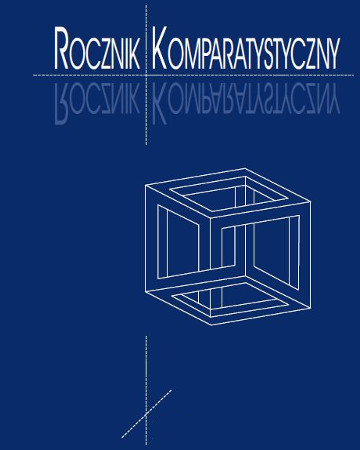





| Autorzy: |
Katarzyna
Lisiecka
Uniwersytet Adama Mickiewicza w Poznaniu |
| Słowa kluczowe: | melodramat opera poetyka Arystotelesa suspens anagnorisis dramaturgia opery Fidelio Beethovena |
| Data publikacji całości: | 2020 |
| Liczba stron: | 21 (189-209) |
| 1. | Allévy-Viala, Marie-Antoinette. Inscenizacja romantyczna we Francji. Tłum. Wojciech Natanson. Warszawa: Państwowy Instytut Wydawniczy, 1958. |
| 2. | Arystoteles. Poetyka. Tłum. i oprac. Henryk Podbielski. Wrocław: Zakład Narodowy im. Ossolińskich, 1989. |
| 3. | Auerbach, Erich. Mimesis. Rzeczywistość przedstawiona w literaturze Zachodu. Tłum. Zbigniew Żabicki. Warszawa: Prószyński i S-ka, 2004. |
| 4. | Beethoven, Ludwig van. Fidelio: Oper in zwei Aufzügen nach dem Französischen des J.N. Bouilly, bearbeitet von Joseph Sonnleithner, neu bearbeitet von Friedrich Treitschke, Op. 72b (Dritte Bearbeitung der Leonore). Leipzig: Edition Peters, 1982. |
| 5. | ------. Leonore: Oper in drei Aufzügen. Partitur der Urfassung vom Jahre 1805. Hrsg. v. Willy Hess. Leipzig: Breitkopf & Härtel, 1967. |
| 6. | ------. Leonore: Oper in zwei Aufzügen. Das Libretto der Aufführung von 1806. Hrsg. v. Helga Lühning. Bonn: Beethoven-Haus, 1996. |
| 7. | Bérard, Jean. „Une curiosité du theatre à l’époque de la Révolution, les Faits historiques et patriotiques”. Romanistische Zeitschrift für Literaturgeschichte 3 (1979): 250–277. |
| 8. | Bouilly, Jean-Nicolas. „Léonore ou l’amour conjugal. Fait historique en deux actes et en prose mel̂ée de chants”. Willy Hess. Das Fidelio-Buch. Beethovens Oper Fidelio, ihre Geschichte und ihre drei Fassungen. Winterthur: Amadeus Verlag, 1986. 327–363. |
| 9. | Dahlhaus, Carl. Die Musik des 19. Jahrhunderts. Wiesbaden: Laaber-Verlag, 1980. |
| 10. | ------. „Über das kontemplative Ensemble”. Opernstudien. Anna Amalie Abert zum 65. Geburtstag. Hrsg. v. Klaus Hortschansky. Tutzing: H. Schneider, 1975. 189–195. |
| 11. | Diderot, Denis. „Rozmowy o Synu naturalnym”. Tłum. Marek Dębowski, Andrzej Siemek. Tegoż. Pisma estetycznoteatralne. Oprac. Marek Dębowski. Gdańsk: słowo/ obraz terytoria, 2008. 39–126. |
| 12. | Döhring, Sieghart. „Die Rettungsoper. Musiktheater im Wechselspiel politischer und ästhetischer Prozesse”. Beethoven zwischen Revolution und Restauration. Hrsg. v. Helga Lühning, Sieghard Brandenburg. Bonn: Beethoven-Haus, 1989. 109–136. |
| 13. | Fidelio/Leonore. Annäherungen an ein zentrales Werk des Musiktheaters. Vorträge und Materialien des Salzburger Symposions 1996. Hrsg. v. Peter Csobádi i in. Anif/Salzburg: Müller-Speiser, 1998. |
| 14. | Goldberg, Jonathan. „Fidelio: Melodramas of Agency and Identity”, Criticism 55.4 (2013): 547–565. |
| 15. | Hess, Willy. Das Fidelio-Buch. Beethovens Oper Fidelio, ihre Geschichte und ihre drei Fassungen. Winterthur: Amadeus Verlag, 1986. |
| 16. | Jacobs, Helmut C. „Jean Nicolas Bouilly (1763–1842) und die Genese des Leonorenstoffes. Léonore ou L’amour conjugal als Fait historique der Revolutionszeit”. Archiv für Musikwissenschaft 48.3 (1991): 199–216. |
| 17. | Lessing, Gotthold Ephreim. Dramaturgia hamburska. Wybór. Tłum. Olga Dobijanka. Wrocław: Zakład Narodowy im. Ossolińskich, 1956. |
| 18. | Lisiecka, Katarzyna. Fuzja sztuk i horyzontów. Arystotelesowski paradygmat opery. Poznań: Wydawnictwo Naukowe Uniwersytetu im. Adama Mickiewicza, 2019. |
| 19. | ------. Świadectwo opery. „Fidelio” Ludwiga van Beethovena na tle przekształceń świadomości europejskiej przełomu XVIII i XIX wieku. Poznań: Wydawnictwo Poznańskiego Towarzystwa Przyjaciół Nauk, 2007. |
| 20. | Lühning, Helga. „Beethovens langer Weg zum Fidelio”. Opernkomposition als Prozess. Referate des Symposiums Bochum 1995. Hrsg. v. Werner Breig. Kassel: Bärenreiter, 1996. 65–90. |
| 21. | Martello, Pier Jacopo. Dialogo della Tragedia antica, e moderna a o sia l’Impostore [Paris, 1714]. Tłum. fragm. Anna Szweykowska. Anna Szweykowska. Wenecki teatr modny. Kraków: Polskie Wydawnictwo Muzyczne, 1981. 116–133. |
| 22. | Mungen, Anno. „BilderMusik” – Panoramen, Tableaux vivants und Lichtbilder als multimediale Darstellungsformen in Theater- und Musikaufführungen vom 19. bis zum frühen 20. Jahrhundert. 2 Bände. Remscheid: Gardez! Verlag, 2006. |
| 23. | Pavis, Patrice. „Melodramat”. Tegoż. Słownik terminów teatralnych. Słowo wstępne Anna Ubersfeld. Tłum., oprac. i uzup. Sławomir Świontek. Wrocław: Zakład Narodowy im. Ossolińskich, 1998. 285. |
| 24. | Przyboś, Julia. L’enterprise mélodramatique. Paris: José Corti, 1987. |
| 25. | Przychodniak, Zbigniew. „W kręgu melodramatu. O nowych publikacjach francuskich i jednej polskiej sprzed półwiecza”. Dramat i teatr romantyczny. Red. Dobrochna Ratajczakowa. Wrocław: Wiedza o Kulturze, 1992. 309–320. |
| 26. | Pyzik, Teresa. „Kilka uwag o melodramacie”. Od tragedii do groteski. Szkice z dziejów pojęć i terminów krytycznoteatralnych. Red. Eleonora Udalska. Katowice: Uniwersytet Śląski, 1988. 41–62. |
| 27. | Ratajczakowa, Dobrochna. Galeria gatunków widowiskowych, teatralnych i dramatycznych. Poznań: Wydawnictwo Naukowe Uniwersytetu im. Adama Mickiewicza, 2015. |
| 28. | ------. „Muzyka melodramatu”. Muzykalia 1 (2008). http://demusica.edu.pl/wp-content/uploads/2019/07/ratajczakowa_zeszyt_francuski.pdf: 8 [dostęp: 10.01.2020]. |
| 29. | ------. „Szarlatan i teatr”. Teksty 2 (1976): 28–46. |
| 30. | Riethmüller, Albrecht. „Die Einheit des Musikwerks in der Vielfalt seiner Fassungen (aus Anlaß von Leonore/Fidelio)”. Von der Leonore zum Fidelio. Vorträge und Referate des Bonner Symposions 1997. Hrsg. v. Helga Luhning, Wolfram Steinbeck. ̈ Frankfurt am Main: Peter Lang, 2000. 25–40. |
| 31. | Rougemont, Martine de. „Le Mélodrame classique: exercice de poétique retrospective”. Revue des sciences humaines 162 (1976): 163–170. |
| 32. | Stachuła, Daniel. „Melpomeny podrzucone dziecię oraz grand monstre. Porównanie dramatycznej architektoniki dzieł Wojciecha Bogusławskiego – Herminia, czyli Amazonki oraz Izkahar, król Guaxary”. Pamiętnik Teatralny 3 (2017): 16–42. |
| 33. | Szpakowska, Małgorzata. „Melodramat, czyli potrzeba serca”. Dialog 1 (1989): 110–118. |
| 34. | Taylor, Charles. Etyka autentyczności. Tłum. Andrzej Pawelec. Kraków: Znak, 2002. |
| 35. | Tomaszewski, Boris. „Francuski melodramat początku XIX wieku”. Tłum. Eugeniusz Szrojt. Dialog 11 (1967): 109–124. |
| 36. | Von der Leonore zum Fidelio. Vorträge und Referate des Bonner Symposions 1997. Hrsg. v. Helga Lühning, Wolfram Steinbeck. Frankfurt am Main: Peter Lang, 2000. |
| 37. | Weber, Samuel. Teatralność jako medium. Tłum. Jan Burzyński. Kraków: Wydawnictwo Uniwersytetu Jagiellońskiego, 2009. |
| 38. | Wild, Nicole. Dictionnaire des théâtres parisiens au XIX siècle. Les théâtres el la musique. Paris: Aux Amateurs de Livres, 1989. |